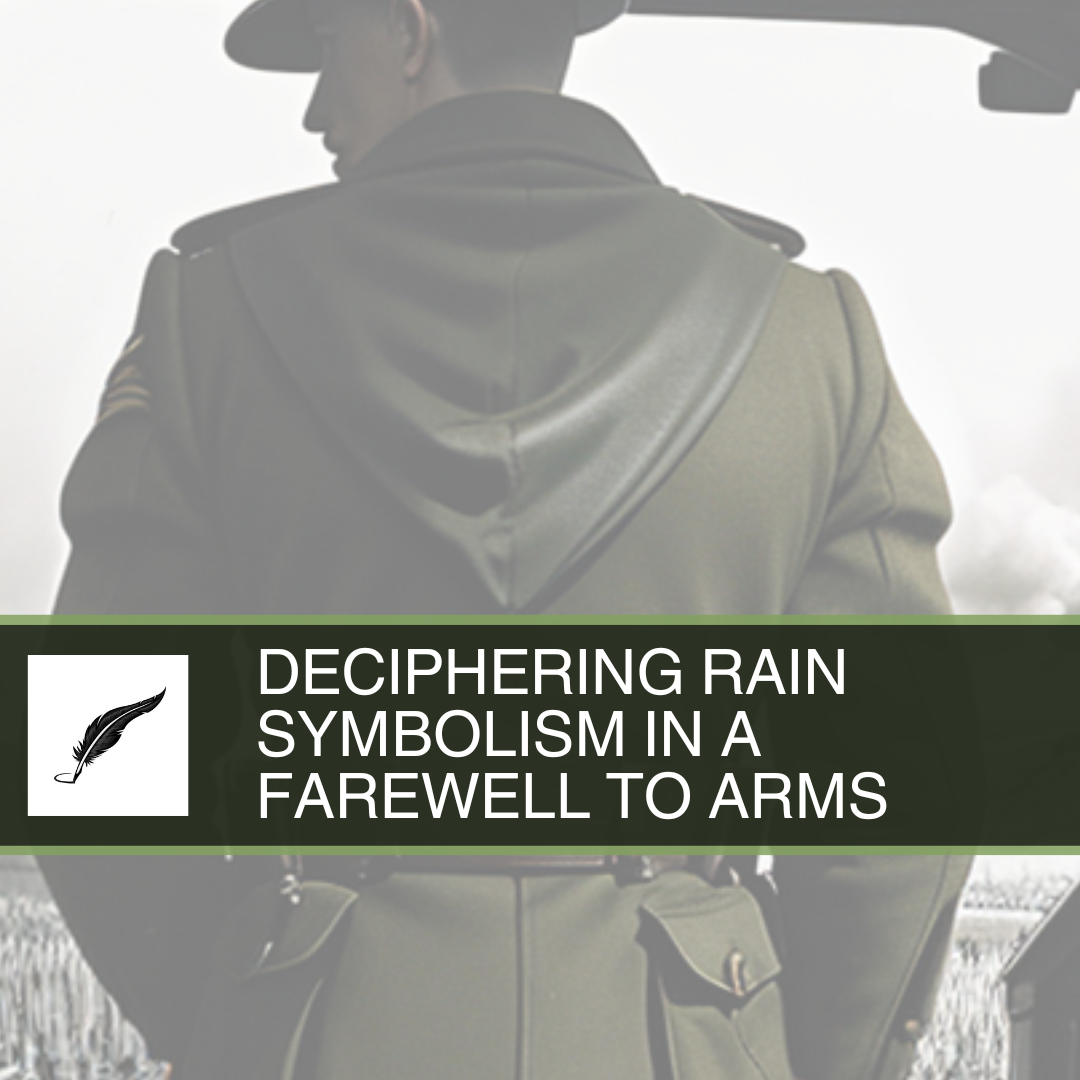Your cart is currently empty!
Deciphering Rain Symbolism in “A Farewell to Arms”

Decipher the rain symbolism in Ernest Hemingway’s A Farewell to Arms and uncover layers of doom, turmoil, and the natural world’s indifference.
Rain is more than just a passing shower in Ernest Hemingway’s classic novel “A Farewell to Arms.” It’s a relentless downpour that haunts the characters, foreshadowing doom and despair. From the cholera outbreak that decimates the Italian army to the tragic ending of Hemmingway’s tale, rain symbolism looms large in the novel. Its presence is a recurring reminder of the fragility of life and the indifference of nature to human suffering.
Hemingway uses rain symbolism to evoke a sense of gloom and foreboding, mirroring the characters’ inner turmoil and the hopelessness of war. Rain also symbolizes the futility of love, as the forces beyond their control ultimately doom Catherine and Henry’s relationship.
Join The Reliable Narrator as we explore the haunting rain symbolism in Hemingway’s “A Farewell to Arms” and uncover the novel’s themes of love, war, and loss.
Rain Symbolism in ‘A Farewell to Arms’
In the midst of World War I, Ernest Hemingway’s “A Farewell to Arms” tells a tragic love story. Throughout the novel, rain symbolism casts a dark shadow, foreshadowing misfortune and despair. When significant events unfold, especially those with tragic consequences, rain pours down, amplifying the mood and signaling impending doom.
Hemingway does not simply use rain as a weather condition. He imbues it with meaning, echoing the characters’ inner turmoil and the hopelessness of war. Rain becomes a manifestation of the character’s fears and uncertainties, as well as the fragility of life and the indifference of nature to human suffering.
The rain symbolism in “A Farewell to Arms” is a powerful symbol of the human condition, capturing the uncertainty, despair, and fragility of life in the face of war and loss.
Plot Points
The Rain’s Symbolism
The rain in “A Farewell to Arms” is not just a climatic occurrence; it’s a symbol deeply interwoven with the story’s themes and the psyche of its characters.
Love and Loss
In the context of Lieutenant Henry and Catherine’s love story, the rain is a constant reminder of the looming tragedy. Their relationship, though profound, is overshadowed by the war’s chaos, and the rain accentuates this overshadowing, hinting at the impermanence of their love and the looming possibility of loss.
The War’s Relentlessness
The pervasive nature of rain mirrors the unending and all-consuming nature of the war. Just as soldiers cannot escape the horrors of the battlefield, they also cannot escape the relentless downpour, further emphasizing the feeling of being trapped and the inescapability of their predicament.
Despair and Hopelessness
Rain often falls during the novel’s most somber moments, reinforcing the atmosphere of despair. It serves as a tangible manifestation of the characters’ internal turmoils and the overarching hopelessness that war and loss bring.
Life’s Fragility
The rain, especially when it leads to floods, portrays the destructive force of nature and, by extension, the fragility of life. This vulnerability is mirrored in the soldiers’ lives, which are constantly at risk, and in the fleeting nature of Henry and Catherine’s romance.
The Natural World’s Indifference
The rain in “A Farewell to Arms” can also be seen as a symbol of the natural world’s indifference to human suffering. The war may be raging, and the characters may be facing immense personal tragedies, but the rain continues to fall, unperturbed. This can be seen as a reminder of the harsh realities of life and the fact that we are all ultimately at the mercy of forces beyond our control.
Catharsis
In the novel’s final scene, Henry watches the rain fall outside the hospital window where Catherine has died. This rain can be seen as a cleansing force, washing away the pain and grief of Henry’s loss.

Reliable Thoughts
The rain symbolism in “A Farewell to Arms” encapsulates the essence of the novel’s themes of love, war, and the transience of life. It serves as a constant reminder of life’s unpredictability and the ever-present shadow of mortality.
For those documenting this in their journals or blogs, incorporating artwork or imagery of rain-soaked landscapes or somber skies might help evoke the profound emotions tied to this symbol, enhancing its emotive power for readers.
by

Leave a Reply